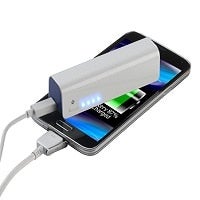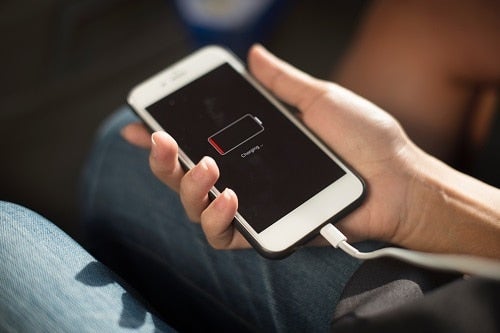Is there anything more frustrating than a low battery? OK, there are probably many things more frustrating than a low battery, but we are now so dependent on mobile devices that it has become second nature to plug in whenever we get a chance, to avoid low battery warnings. Demographically, the way we keep topped up probably varies but battery anxiety is now a real and widespread thing, and we go to extreme lengths to avoid it.
Plug sockets in public places are a favorite, like coffee shops, airport lounges and even trains. Not everyone is happy about this, some sockets have been adapted to only accept compatible plugs, but in general most companies see it as a way of building customer loyalty and, much like free Wi-Fi, it has become expected.
Accessing free power may not be that difficult but it does rely on you carrying around a power adapter. Commercial companies may be willing to provide power but they draw the line at providing adapters, too.
If we exclude public sources of power, what’s the alternative to losing contact with your digital self when you’re far from a power outlet and down to your last bar? Power is as valuable as data in this context, but accessing it isn’t as easy as leaning out of a window to get a better signal, and cellular networks can’t wirelessly deliver power to your smart phone, at least not yet.
Early mobile telecommunications devices were large, heavy and power-hungry. Only people who really needed to be in constant contact were seduced into being early adopters. The battery accounted for most of the weight and size, and as market pressures forced the size of handsets to shrink rapidly they imposed a corresponding size restriction on the battery. For ‘simple’ handsets this wasn’t a major problem, because (believe it or not) most people only used their handsets to make and receive phone calls, and they could do that for several days on a single charge. The advent of the Feature Phone (as it was initially known) put paid to that and it is was arguably the start of battery anxiety. Feature phones gave batteries a real workout, but the die had been cast; handsets must get smaller with every generation, not larger. There was no going back in size and weight, and so operational time became the casualty.
Almost immediately the market responded with the portable power bank; a rechargeable (typically Lithium-based) battery housed in a plastic case with one purpose only, to provide a power boost for mobile devices. By standardizing on the USB profile, power could now be stored in one battery and transferred to the battery of any device that could be charged from a 5V, 100mA source.
The ubiquitous nature of USB means power bank design hasn’t changed for many years. However, the advent of the USB C (Type-C) connector and Power Delivery specification will mark the end of that era and the beginning of a new one. Power Delivery (PD) has the ability to dynamically vary the amount of power delivered through the Type C connector, up to a maximum of 100W. More importantly, it is the technology behind Fast Charging. This requires the device being charged to negotiate with the power source, which in turn must then deliver higher levels of power, resulting in much shorter charge times.
Blasting a Lithium-Ion battery with more power isn’t a simple process, so Fast Charging only works in cooperation with the processor on the device being charged. For power bank designers this represents a massive opportunity, which comes with its own challenges. Today’s power banks only need to deliver a steady 5V, but Fast Charge technology is required to deliver various voltage levels and currents, based on what the device can handle.
Consumers with battery anxiety will be eager to get their hands on this technology and power bank manufacturers are evaluating solutions right now. This includes solutions like the LC709501F, a power bank charge controller with USB Type-C port controller able to deliver between 5V and 12V for faster charging, it also supports Quick Charge 3.0 HVDCP Class A.
USB Type-C with PD is going to be a real game-changer for consumer devices, most notably portable and wearable devices. As feature sets increase and overall physical size continues to fall, power banks will become more relevant. As well as personal devices, the IoT will be enabled by remote endpoints that may need to be recharged periodically, and power banks featuring USB Type-C with PD could become the new norm here. Power maintenance could see people walking around recharging IoT endpoints using a power bank, which presents an entirely new kind of anxiety.
Visit our USB-C Solutions page and find out more about accessories use case.
Watch the Power bank solution video to learn about the controller.


